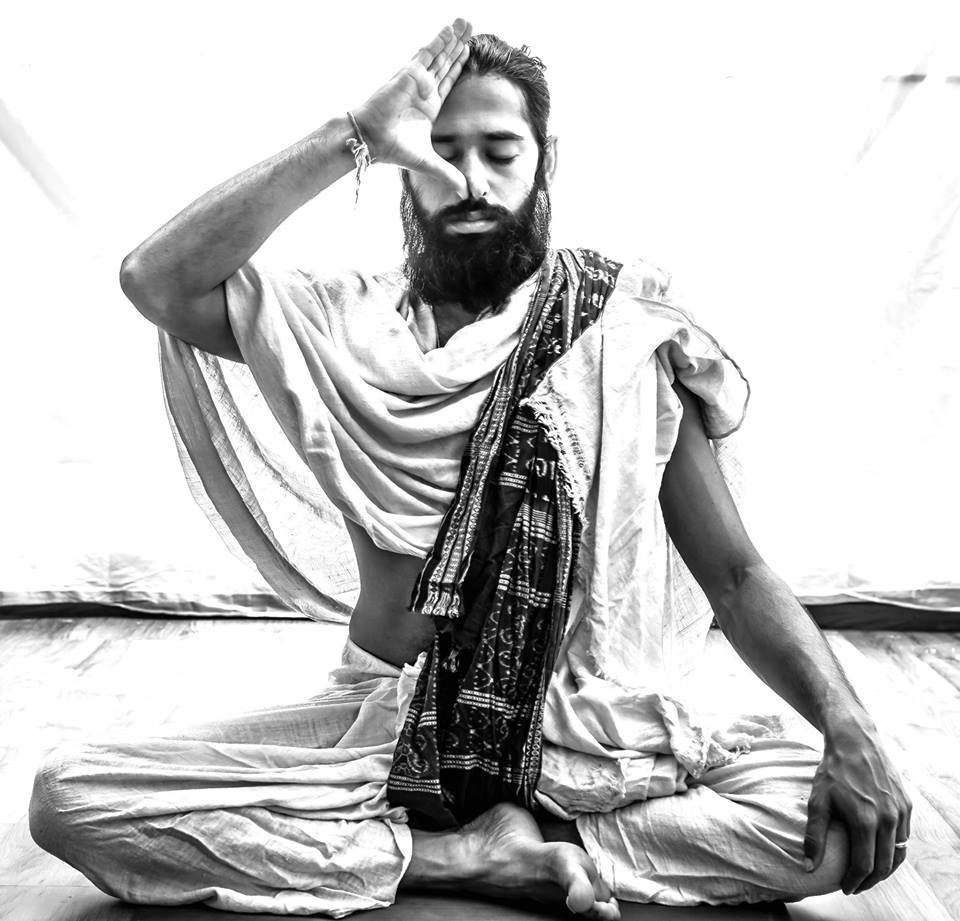Prana means life energy, the breath of life. Yama means control. Pranayama is the control of our life breath.
Pranayama is a technique of energized breathing proven by thousands of years of practice. With Pranayama we can wind up and control our life energy lying somewhere withing us, dormant. We can move the energy into different parts of our being, including the physical body of course. In this way, we can get rid of tiredness, increase our mental capacity, improve our concentration and control of our thoughts (this is probably most interesting for us) or replenish our body’s regeneration in case our energy is stuck somewhere. So it is a very practical skill to learn.
The effects of Pranayama exercises we can feel already during our first attempts. That gives us the inspiration to keep going and make it regular. It’s important to state that unless we are masters in this art it is difficult to solve more serious problems with our energy. It can be blocked from various reasons: physical (perhaps a stiff muscle or pressed nerve), emotional (an experience from past years that we haven’t processed) or mental (attachments to opinions or long-term mental stress). In more serious cases, for example, when our energy is depleted either totally or in certain parts of our being, it is better to search for help from someone experienced. Nevertheless, by starting with Pranayama we may find out that simple exercises can solve our problem as well.

Both mental and emotional balance is influenced by meditation as well, of course. But in this case, we have to be more patient. Meditation is a process that goes deep and from there it allows the inner Light to slowly transform us. Meditation simplifies our life, straightens and balances it, and while this is happening our mental and emotional problems often fall off by themselves like dead branches that we don’t need anymore. It is a slow and steady process but its effects are long-lasting.
We can easily get enchanted by the effects of Pranayama because they are felt immediately. But if our goal is the total transformation we have to be patient and keep trying to dive deeper and deeper into ourselves in our meditations. Pranayama doesn’t go deeper than our vital energy while meditation does go to the spiritual level. Pranayama can purify our mind, so it is very useful for meditation, but if we devote most of our time to breathing techniques instead of using our energy for concentration and meditation, we won’t get very far. In any case, we will do both meditation and breathing exercises in our classes.
So let’s try some exercises!
Rhythmic breathing
The very first exercise you can practise is to repeat once, as you breathe in, the name of God, the Supreme, or a simple mantra such as Aum. This breath does not have to be long or deep. Then hold your breath and repeat the same name four times. And when you breathe out, repeat two times the name or mantra that you have chosen. You inhale for one count, hold your breath for four counts, and exhale for two counts, inwardly repeating the sacred name. If you simply count the numbers — one-four-two — you do not get any vibration, any inner feeling. But when you say the name of God, immediately God’s divine qualities — Purity, Peace, Love, Bliss and many others — enter into you. Then when you hold your breath, these divine qualities rotate inside you, entering into all your impurities, obscurities, imperfections and limitations. And when you breathe out, these same divine qualities carry away all your undivine, unprogressive, destructive qualities.
~ Sri Chinmoy, Promised Light from the Beyond, Agni Press, 1973
Alternate breathing
In normal breathing both of our nostrils are usually functioning. But when we breathe properly through alternate nostrils, we get immediate relief from mental anxiety, worries, depression and many other things that cause disturbances in our nature. Alternate nostril breathing is a most important breathing exercise. We start by using our right thumb to close our right nostril. Next we breathe in with the left nostril, silently repeating the name of God, Supreme or puraka, just once. Then we close the left nostril with the fourth finger of the right hand, and with both nostrils closed, silently repeat the name of God, Supreme or kumbhaka four times while holding the breath. Finally we lift the thumb from the right nostril, still keeping the left nostril closed, and exhale, repeating God, Supreme or rechaka twice. Some of the Indian Yogis do this exercise for hours, but it should be done comfortably and without force or strain.
~ Sri Chinmoy, The body, humanity’s fortress, Agni Press, 1974
To close up it is important to state certain risks while doing Pranayama. Because it is easy to overdo it. We can then get a headache for the whole day or feel out of balance from too much energy or oxygen circling in our body. In extreme cases, we could damage some of our organs. Excess in energy is a disbalance as well. So we have to be wise and not overdo anything 🙂
